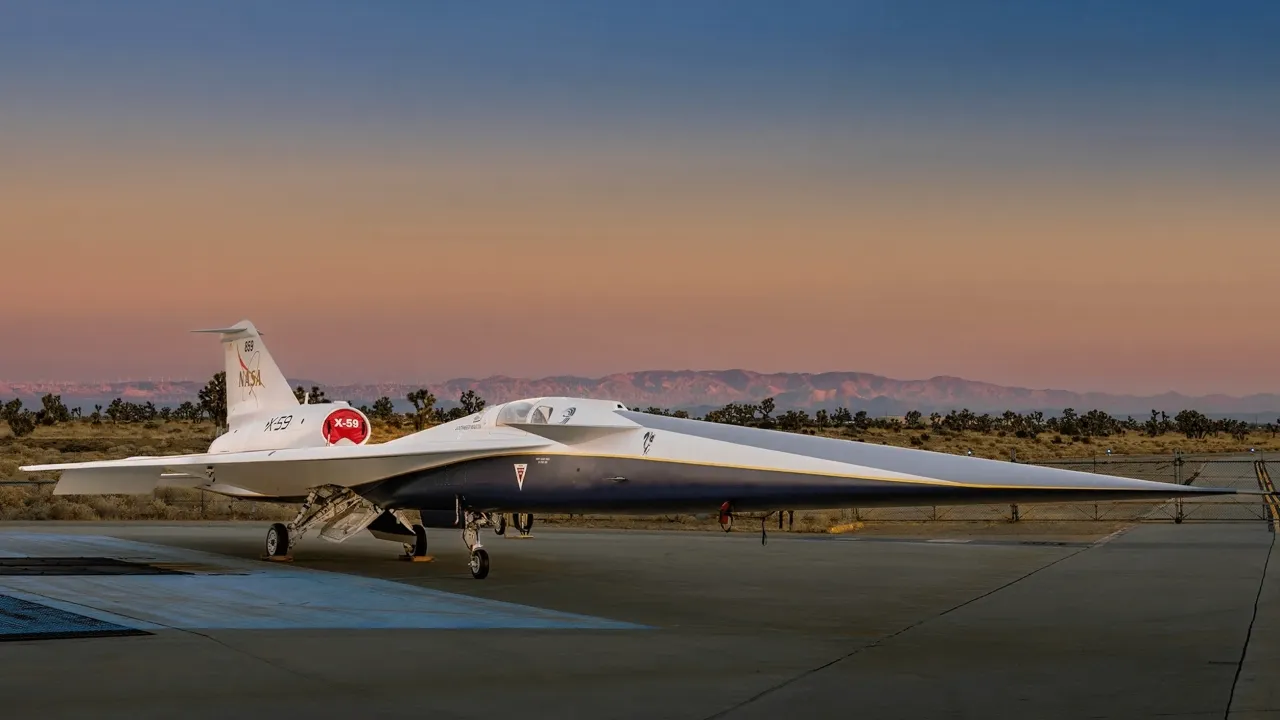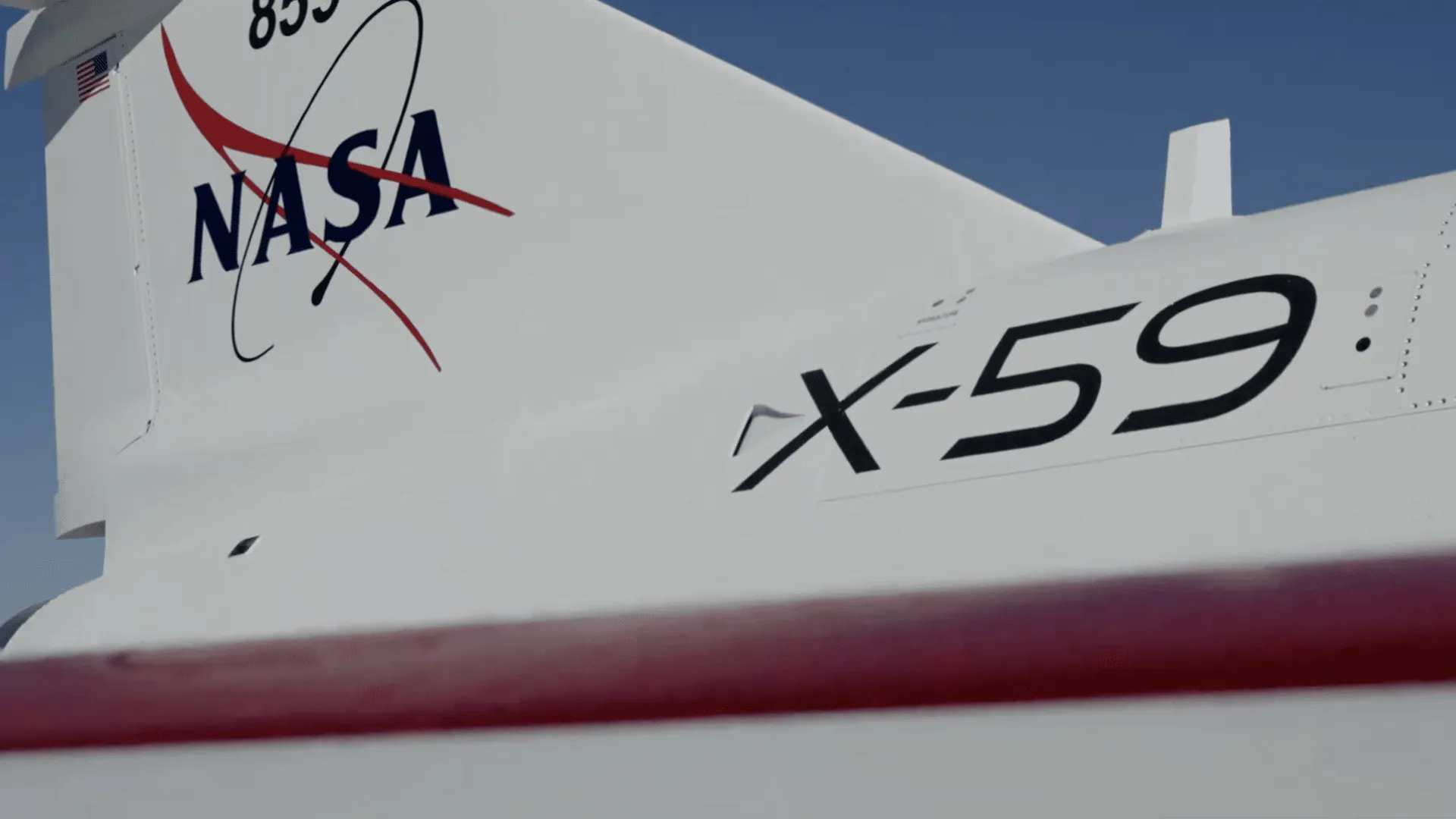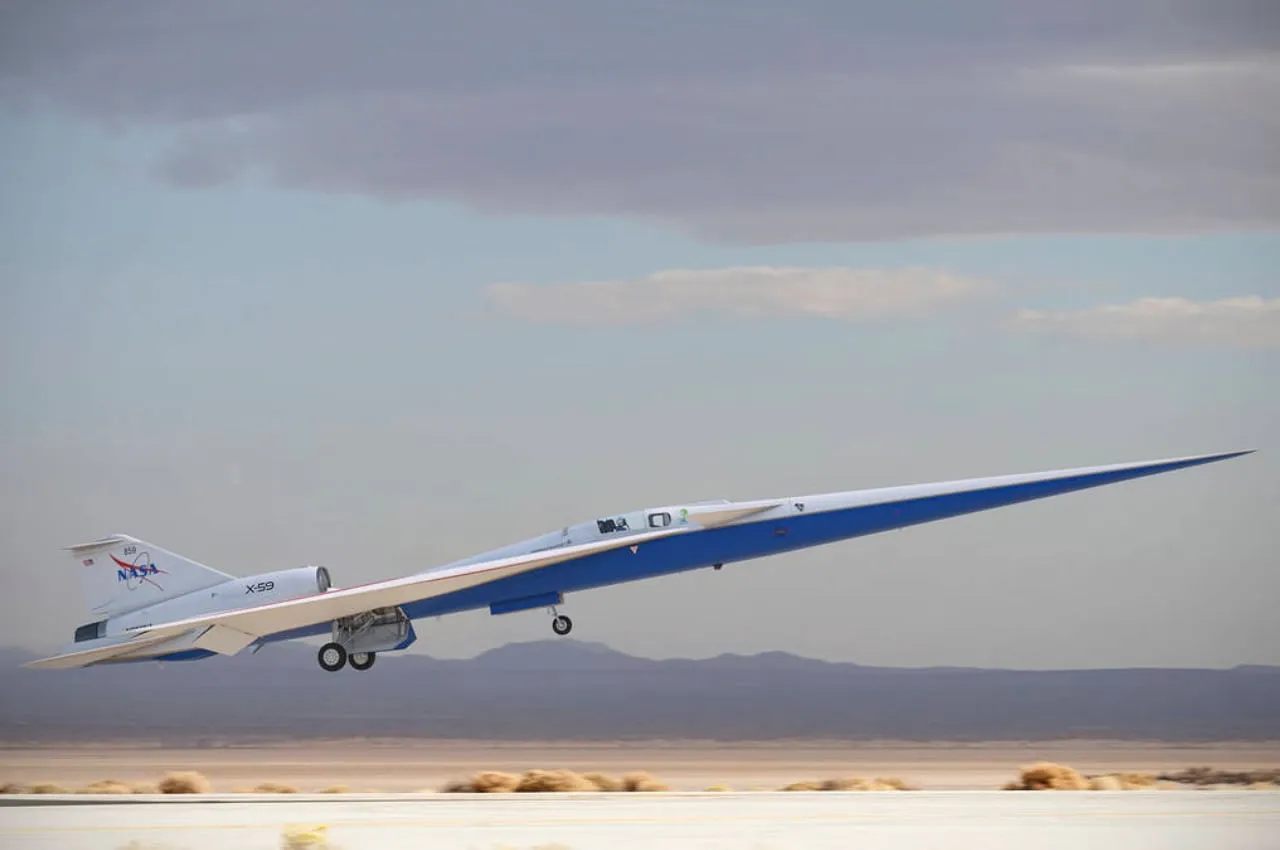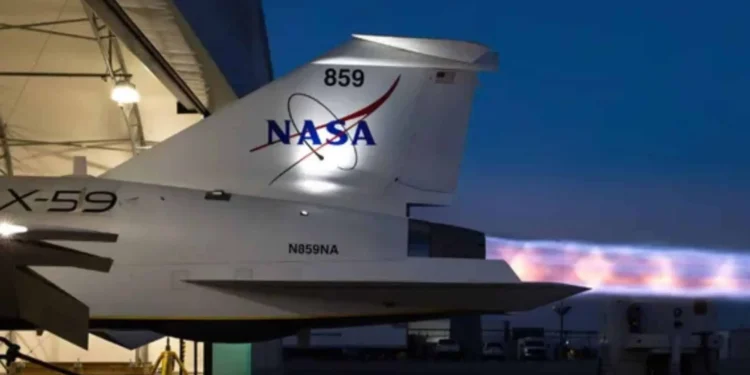In a groundbreaking development in aviation, NASA’s X-59, crafted by aerospace giant Lockheed Martin, is on the brink of its inaugural flight, promising to usher in a new era of quieter supersonic travel. This pioneering aircraft, backed by a robust $247.5 million investment, aims to challenge the loud supersonic booms associated with high-speed flight, replacing them with mere whispers of “sonic thumps.” Such a technological leap could revolutionize how we perceive travel over great distances, potentially cutting flight times significantly while maintaining a tranquility unheard of at such speeds.

The Quest for Quiet: Engineering Innovations Behind the X-59
The X-59 isn’t just any aircraft; it’s a beacon of innovation designed specifically to address the disruptive booms that have long plagued supersonic travel. Its distinctive elongated shape and long nose help disperse shockwaves that typically result in booms, aiming instead to produce a gentle thump. This aircraft could lead to the lifting of long-standing restrictions on supersonic flight over land, reshaping air travel as we know it.
NASA’s “Quiet SuperSonic Technology” mission, or QueSST, is at the heart of this endeavor. The project seeks not just to pioneer new technological heights but to integrate them seamlessly into commercial aviation, potentially making rapid cross-country travel more accessible and economically feasible.
Fueling Innovation: Lockheed Martin’s Role in X-59’s Development
Lockheed Martin’s involvement in the X-59’s development underscores the aerospace industry’s commitment to advancing U.S. aviation capabilities. As the manufacturer of some of the nation’s most formidable fighter jets, Lockheed Martin brings a wealth of experience and expertise to the table. The recent afterburner engine tests, crucial for enabling the X-59 to achieve and sustain supersonic speeds, mark a significant milestone towards the aircraft’s operational readiness.

Beyond the Horizon: What the X-59 Means for Future Travel
The economic implications of integrating supersonic flights into mainstream travel routes are profound, yet complex. While higher speeds could justify higher ticket prices due to reduced travel times, the X-59 aims to balance cost with efficiency. If successful, the aircraft will enable passengers to traverse continents in fractions of the current travel times, potentially transforming how we conceive long-distance travel.
Bob van der Linden, an aviation expert at the Smithsonian Institution’s National Air and Space Museum, lauded NASA’s efforts, emphasizing the importance of pursuing viable solutions for high-speed travel. This aircraft, with its promise of rapid yet quiet travel, could indeed mark the beginning of a new chapter in aviation history.

The Road Ahead: Anticipating the X-59’s Flight Tests
As the X-59 prepares for its first test flights over the California desert in 2025, anticipation is building. Following these initial tests, Lockheed Martin will hand over the reins to NASA for extensive acoustic testing. By 2026 and 2027, the X-plane is expected to soar over select U.S. cities, offering a glimpse of the future of aviation.










